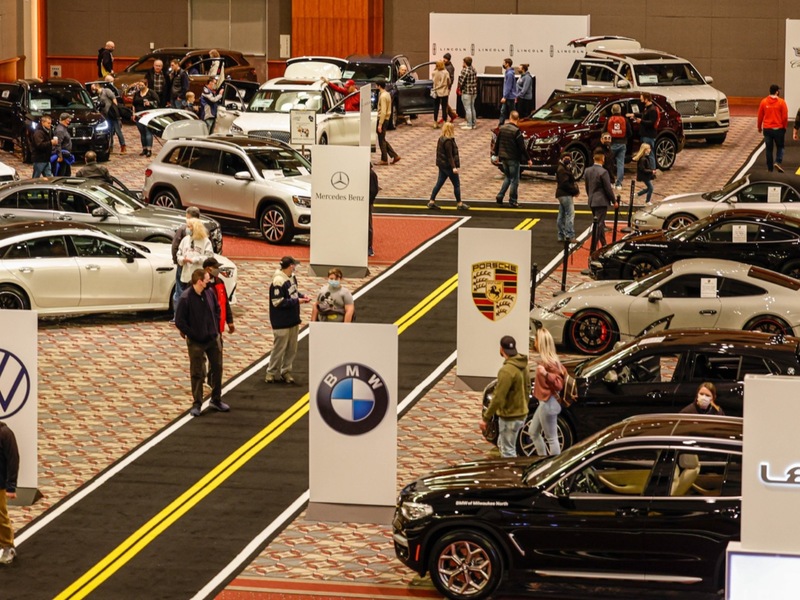This content is presented in partnership with ADAMM.
Legend has it that General Motors quickly developed the Camaro in response to another car company’s new sporty car for swingin’ hipsters, but Dean Duston has no patience for that.
“The Camaro wasn’t designed to compete with the Mustang,” says Holz Chevrolet’s new vehicle manager. “It was a muscle car, and GM has been reinventing it ever since.”
Introduced in 1966 as a 1967 model, the Camaro quickly achieved legendary status, selling nearly 250,000 hardtops and convertibles in its first model year. With a base price of $2,466, the initial offering had a 140 hp six-cylinder engine, but more powerful engines, including a big block V-8 that produced 375-hp, were available, too.
Camaro impressed Indianapolis 500 officials so much that it made the first of its four pace car appearances in 1967.
According to Car and Driver, GM partially based the Camaro on a sporty sedan that already existed – the Chevy II Nova – but with speed in mind.
“Chevrolet was determined to establish high-performance credentials for the Camaro, doing that with the creation of the 1967 Z/28 powered by the 290-hp, 4.9-liter high-compression V-8,” the magazine says. “In the hands of team owner Roger Penske and driver Mark Donohue, the Z/28 would prove to be racing dynamite in the SCCA Trans-Am series. Camaros have long been among America’s most-raced cars.”
GM first reinvented the Camaro in 1969 by offering more “high-revving charisma” under a Ferrari-inspired hood while also making it “a much friendlier everyday driving companion.” The car remained a fixture in Chevy’s stable until the early 2000s, when GM put it on hiatus for a few years before introducing an all-new version that was updated for the 21st century, but retained its rear-wheel drive and body styling that recalled the earliest models.
“I remember going to the Chicago Auto Show to see the concept,” Duston says. “The line was forever. You couldn’t get near it.”
Camaro’s new iteration scaled the heights of stardom – literally – within a year as the car that inspired Bumblebee, the “hero” of the movie “Transformers.”
The most recent generation of Camaro – the sixth, introduced in 2016 – “is just insane,” he says. “You get in and drive it and laugh, because it’s so much fun.”
Jered Voss, sales manager for Lynch Chevrolet in Burlington, says that the retro design, powerful engines and precise handling draw a diverse cadre of buyers, from today’s hip and trendy twentysomethings to fans who worshipped the first Camaros back in the day.
“It’s an incredible car for what you pay,” he says. “You can get one that’s pretty well equipped brand new for $32,000.”
The price range goes from $24,000 all the way up to $69,000.
Voss and Duston are quick to point out that current Camaros have a lot in common with cars that generally cost more and have snazzier reputations.
Built on the “Alpha” platform first utilized in the Cadillac ATS, the sixth-gen Camaro, Car and Driver says, “is lighter and more toned than its predecessors.” The Camaro SS features C7 Corvette’s 455-hp 6.2-liter LT1 V-8, and a 3.6-liter, 355-hp V-6 is listed as “the midrange engine option.”
Also, last year, you could get a Camaro with a four-cylinder engine for the first time in 35 years – but it’s turbocharged and produces 275 hp, the same as the 1993 Z-28’s V-8.
Most local dealerships keep more than a handful of new Camaros in stock because, Voss says, they’re niche vehicles that most buyers drive only as summertime “cruisers.” However, he added, they are popular as used vehicles.
“People who want to keep up with the latest trade in previous-generation Camaros and drive away in new ones,” Voss explains. “Those trade-ins usually have low mileage and are especially popular with young guys on a budget.”
Some industry sources have reported rumors that Camaro may be headed for another hiatus in a few years. Loyalists, however, got a burst of optimism when GM announced this year that it intends to offer several vehicles with electric drivetrains in a 15-second video with no text or narration that shows outlines of several SUVs, a pickup, a van – and a car that bears the familiar Camaro silhouette.
“I wouldn’t be surprised if GM comes out with an electric Camaro,” Voss says. “GM has already announced an electrified Corvette, and what they do with the ’Vette they often follow up on with the Camaro.”

.jpg)





